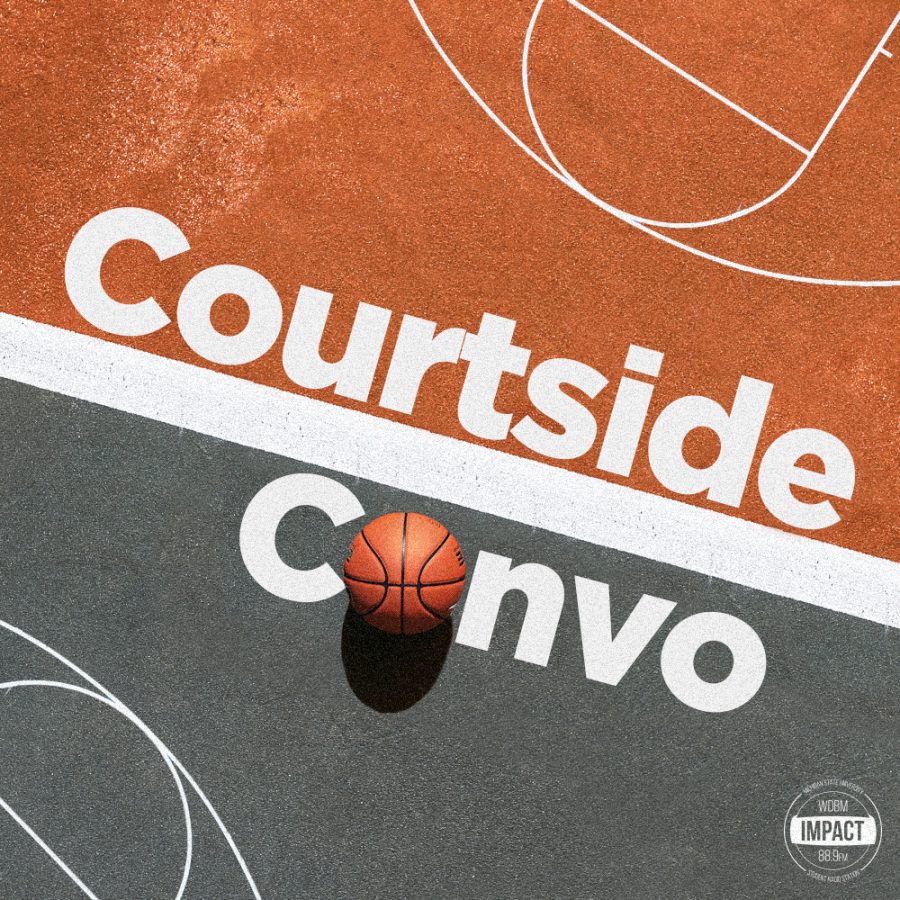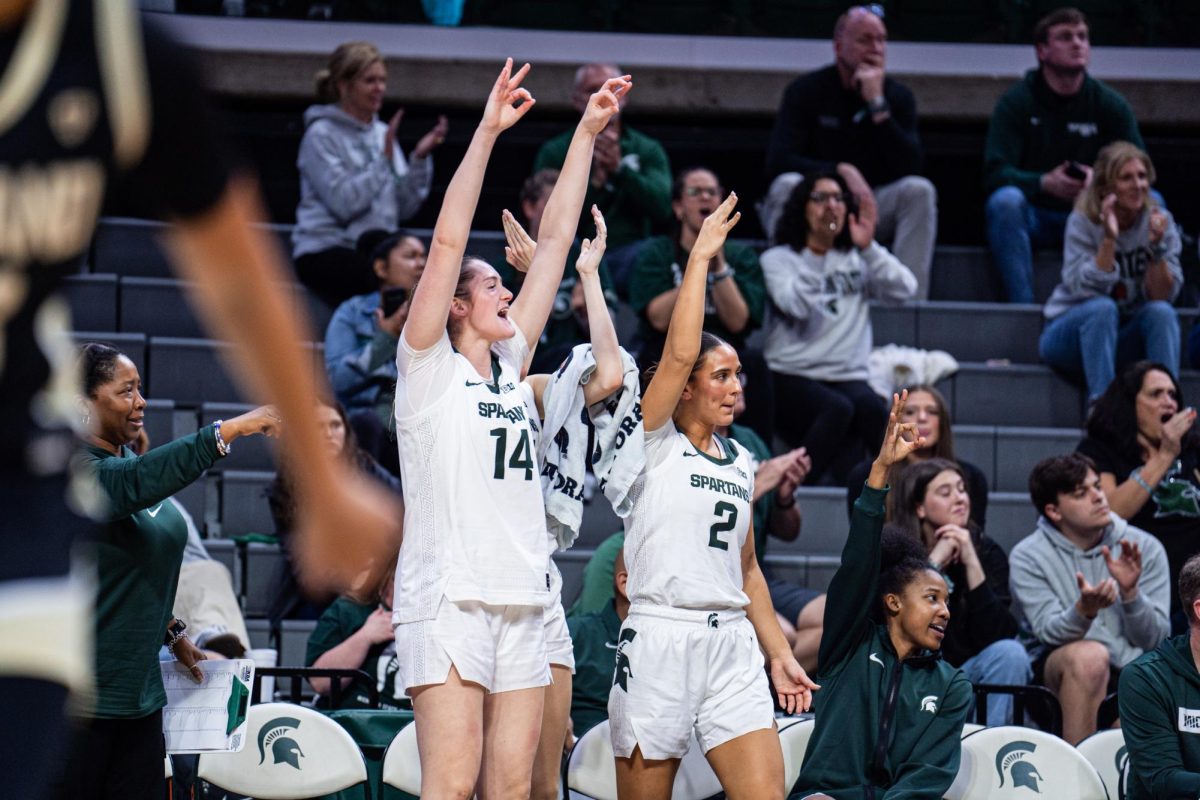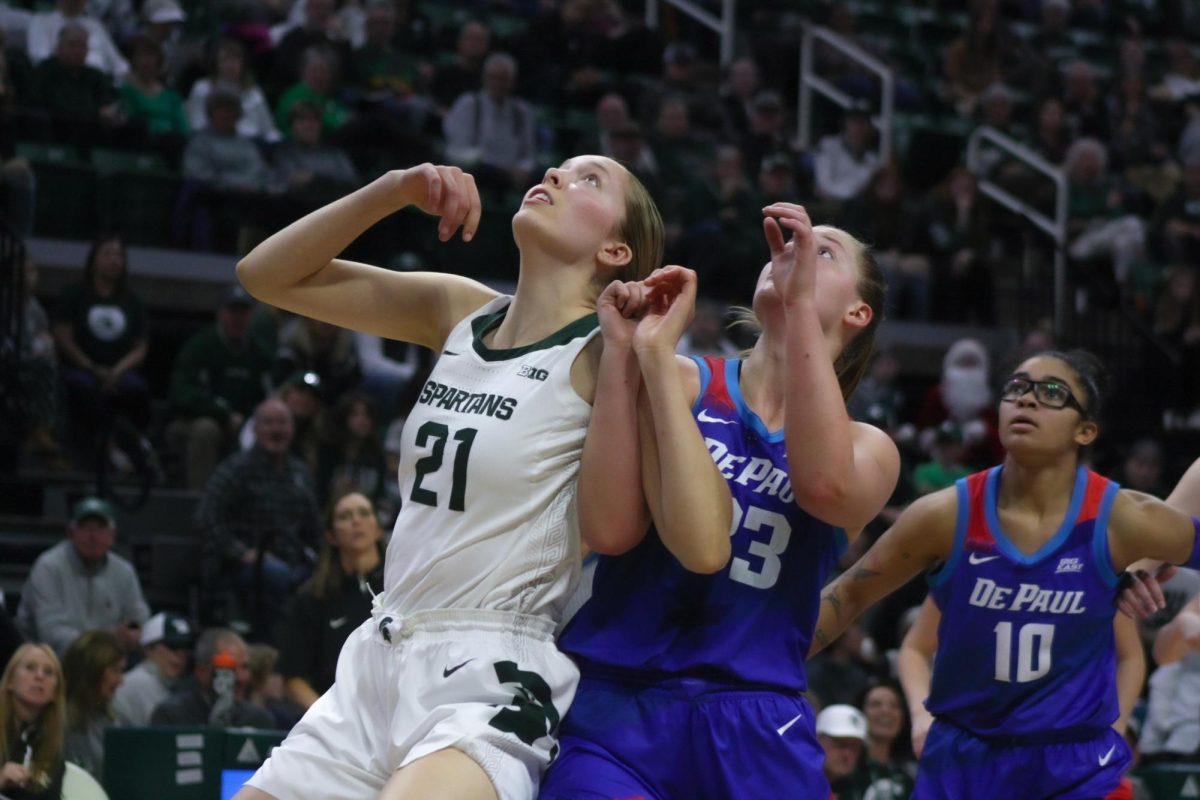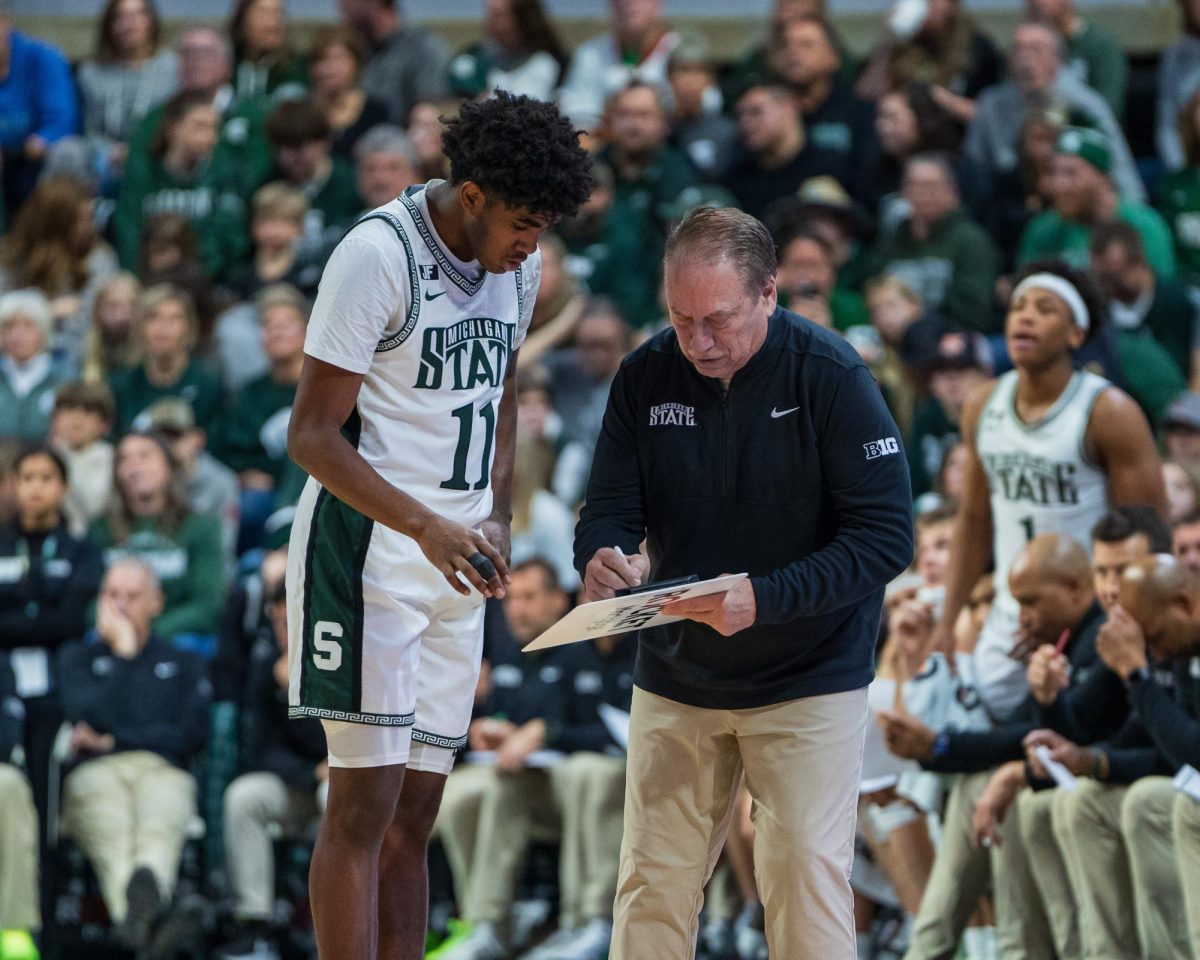Growing up a Michigan State fan, I was used to losing to the University of Michigan in football. It was almost so inevitable, I would catch myself muttering “wait until basketball season” under my breath before the first half was even over. The leader of this dominance was the Wolverines’ head coach Lloyd Carr. Carr was named interim, and then later head coach in 1995 after the resignation of Gary Moeller. He enjoyed early success, winning the National Championship in 1997 after beating Ryan Leaf’s Washington State team in the Rose Bowl on January 1st, 1998. This early triumph allowed him to reign supreme over the college football world, with the Wolverines continuing their dominance over their in-state rivals in subsequent years.
During Carr’s tenure as head coach, he went a combined 10-3 against the Spartans, contributing to the lopsided 30-8 record Michigan boasted against Michigan State from 1970 through 2007. However, a new life was handed to the Spartans when Carr retired and Michigan hired former West Virginia coach Rich Rodriguez. Rodriguez’s first year in Ann Arbor was the worst in Michigan’s storied football history, going 3-9 in a season that saw Michigan State beat them, thus marking the first of four consecutive wins by the men from East Lansing. But all good things must come to an end, and that time came when Michigan fired Rodriguez and hired former assistant coach and then head coach of San Diego State, Brady Hoke. Although Hoke lost his first matchup with Michigan State, the Wolverines reached the Sugar Bowl, where they took down Virginia Tech via a last-second field goal. Using that momentum, Hoke put an end to the Spartan’s win streak in the 2012 season, winning an ugly one by the score of 12-10. After that loss, I couldn’t shake the feeling that this was the beginning of another long streak of Wolverine football dominance in the state of Michigan for the following reasons listed below.
Recruiting
The simplest reason to back up my claim of Michigan’s upcoming dominance is Hoke’s recruiting talent. During the Lloyd Carr era, Michigan State was forced to live on the scraps that Carr and Michigan didn’t want in the state of Michigan. Take the 2008 state of Michigan recruiting class for example, the last group of players Carr recruited. According to Rivals.com, Michigan snagged four out of the top ten recruits in the state, including the top two, while Michigan State was left bottom feeding yet again. However, after Rodriguez’s dismal first season at Michigan, the tide changed. In the 2009 class of Michigan high school recruits, the Spartans claimed an unprecedented seven out of the top ten players. It is no coincidence that once Michigan State started winning the state of Michigan recruiting battle, they started winning the battle for the Paul Bunyan Trophy.
But then, Brady Hoke happened. In his first recruiting class, he raked in six out of the top ten recruits from the state of Michigan and finished with the fifth-best overall class nationally. Hoke is back at it again with the 2014 recruiting class, coming in right now with the tenth rated group in the country, with ESPN analysis ranking the class #1 overall. Some of the notable standouts include four-star receiver Drake Harris, who Hoke stole from his in-state rivals from East Lansing after Harris decided he wanted to focus on football and drop his hoop dreams.
What worries me most as a Spartan fan is the swiftness with which Hoke and Michigan regained the power position in this recruiting battle. Michigan State was fortunate when Rich Rodriguez arrived in Ann Arbor. That man seemingly set their program back years and allowed Dantonio and his staff to regain footing in the state of Michigan with blue chip recruits. But what took Dantonio four years to accomplish, Hoke has done in one, and done with more success. I realize that online ratings of high school players don’t automatically mean success on the college level or predict average ordinary careers. Take Michigan’s Will Campbell and Michigan State’s Le’Veon Bell for example. Campbell was a five-star recruit out of Detroit Cass Tech, and one of the most sought after players in the nation. However, he never lived up to expectations in Ann Arbor and didn’t receive regular playing time until his senior season. Bell, on the other hand, went in the exact opposite direction. He was only rated two stars out of high school, but in his junior year in East Lansing, he became one of the best running backs in Division I football while shouldering a majority of the Spartan’s offensive load and leading the team to a bowl victory in December. At the end of the day, however, Hoke is pulling in some of the best high school talent in the state of Michigan and dressing them in Maize and Blue. That will give them, at the very least, the upper hand on Michigan State, who has fallen quite a distance behind in this regard.
NOTE: All recruiting information was taken from Rivals.com
Spartan’s Unwillingness to Adapt to Modern Offensive Schemes
Both Hoke and Dantonio adopted programs that ran modern albeit flawed spread offenses. Both implemented more traditional pro-style offenses, bringing a breath of fresh air for each school’s fan base. But there were two things Hoke possessed that Dantonio didn’t: a high-octane offensive coordinator, Al Borges, and a high-octane offensive weapon, Denard Robinson. Hoke brought Borges with him to Ann Arbor from San Diego State, where he was an established offensive coordinator who had previously coached high-scoring offenses at schools such as Auburn and UCLA.
Dantonio has no such sidekick. He lost Don Treadwell in 2011, the offensive coordinator he brought to Michigan State when Dantonio was first hired. In my opinion, this was an underrated departure that had many adverse ramifications. Many forget that Treadwell was interim head coach for the Spartans in 2010 when Dantonio suffered a heart attack shortly after the stunning last-second victory over Notre Dame. Treadwell led the team to two victories, including a convincing victory over then No. 11 Wisconsin Badgers. That attracted head coaching offers for the coordinator, leading him to the top dog position at Miami, Ohio.
Succeeding Treadwell was Dan Roushar, who took a more conservative approach to his offensive scheme. The Spartans became a run-run-pass offense, and Dantonio appeared to be completely fine with these tactics despite the lack of offensive results. For the 2013 season, Dantonio is now employing a coordinator by committee approach on the offensive end, naming Jim Bollman and Dave Warner as co-offensive coordinators. Whereas the Spartans will need to find a newfound offensive identity, Michigan’s has settled in nicely under Al Borges’ philosophy. Additionally, Michigan State could very well see a quarterback controversy for next fall, but Michigan has an established field general in Devin Gardner. These are some crucial advantages Michigan has over Michigan State, but the root of the problem seems to lie in the style of offense run. Although both technically run a pro-style scheme, Michigan and its coaches have shown a willingness to tweak the system to keep up with the changing trends of college football. Michigan State, on the other hand, has appeared to be resistant to change, thus allowing their hated rivals to come across as more modern if not downright cutting edge. Michigan State’s addition of freshman dual-threat quarterback Damion Terry gives Spartan fans hope, but until Dantonio proves that he is willing to incorporate Terry into their offensive system, the upcoming season might appear shockingly similar to last year’s 7-6 campaign.
Marketing
College sports is a business, although many do not like to admit it. And business is running better for Michigan than Michigan State at the current time. Sure, both schools have innovative athletic directors in Michigan’s Dave Brandon and MSU’s Mark Hollis, but University of Michigan football is simply a larger brand name than Michigan State football. Michigan is historically the winningest college football program in Division I, and this enduring legacy has allowed it to build up revenue and followers over the years. Adding to that fact, Michigan changed its apparel sponsorship to Adidas from Nike in 2008, gaining the richest contract of its kind for any NCAA program. Simply put, Michigan has more money at its disposal than Michigan State. As much as the Spartans try to put up a fight against Michigan in the marketing field, they are fighting a losing battle: Spartan Stadium gets renovated, the Big House gets a more expensive one; new scoreboards are built in East Lansing, same thing happens in Ann Arbor. You get the point.
The additional money flooding into Ann Arbor also helps Michigan to schedule games that are prime marketing showcases, such as the “Under the Lights” matchup against Notre Dame in 2011 and last year’s season opener against defending champion Alabama in Cowboy Stadium. This marketing battle that Michigan is winning goes hand-in-hand with the school’s advantages in recruiting. High school players want to play ball where they can feel like rock stars, and with new jerseys, stadium renovations, and high-stakes primetime games abounding, the University of Michigan holds a huge upper hand over the Spartans.
I hope this isn’t taken as too much of a bash on Michigan State University, and it is worth noting some of the Spartans’ attributes. They are solid at recruiting, and whereas Dantonio and his staff may not always get the highest-ranked players, they do fill positions of need with hard workers willing to get the job done. And Michigan State certainly isn’t bad at marketing their sports programs. Mark Hollis is an impressive AD and has set up previously unheard of plans, such as playing a basketball game on an aircraft carrier. Offensively speaking, the Spartans have some work to do to catch up with Michigan for the 2013 season, and another mediocre year might spell disaster down the line. Because of these reasons, I believe Paul Bunyan will be able to stay calm and comfortable in Ann Arbor for a majority of the next decade, eerily similar to the Lloyd Carr era.
Prepare yourselves Spartan fans, and remember before you mutter, “wait until basketball season” under your breath: those victories aren’t guaranteed anymore since Michigan happens to be the national runner-ups after last season. So, Coach Izzo, you have your work cut out for you.
Then again, I could be wrong.
_______________________________________________________________________________________________________________________
Dan Krier is the host of Walk the Line for Impact Sports.
Photo: David Defever/Impact Sports
_______________________________________________________________________________________________________________________










